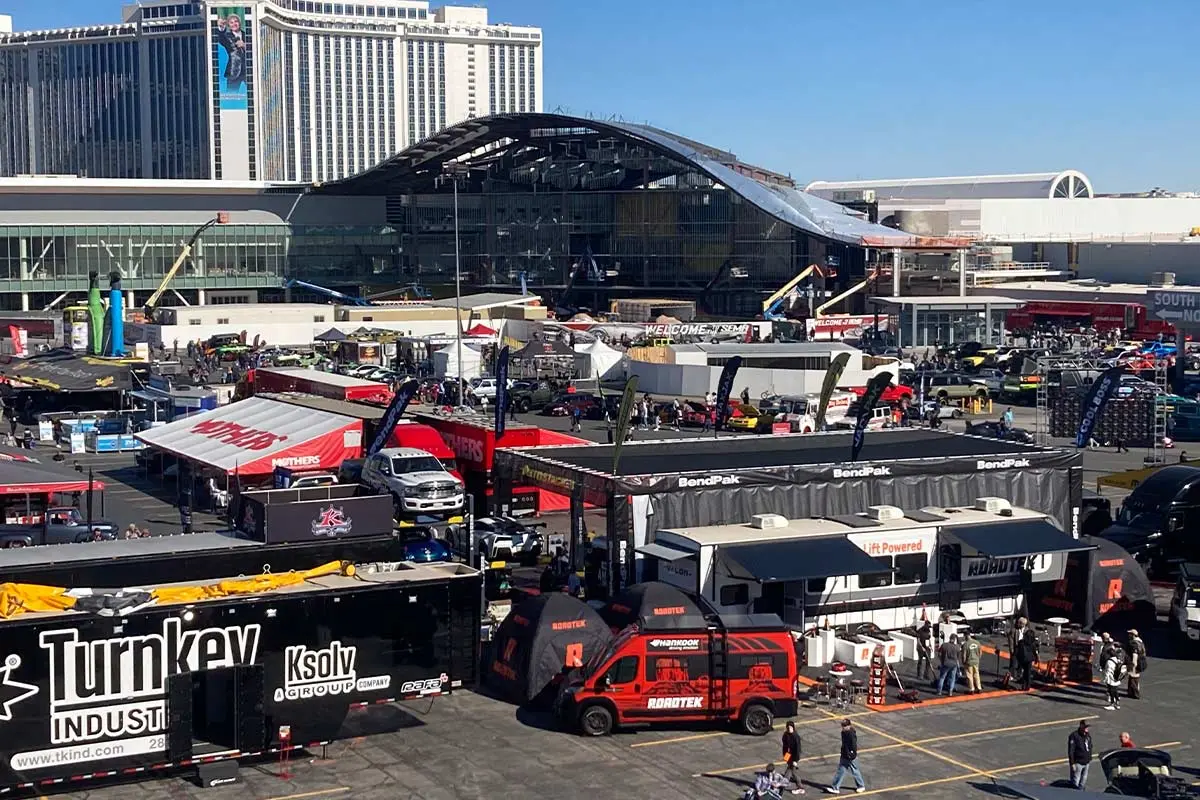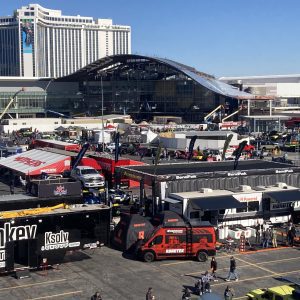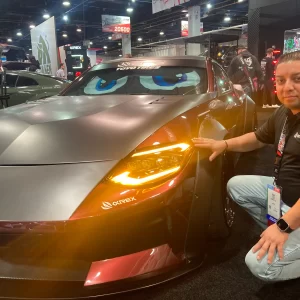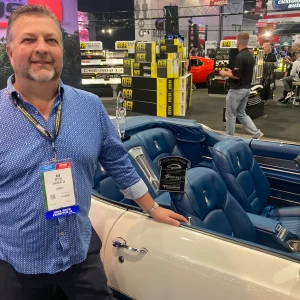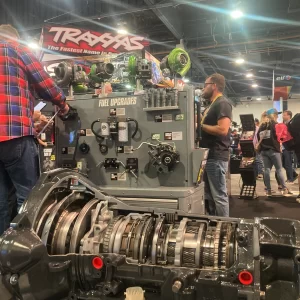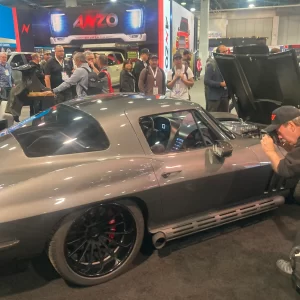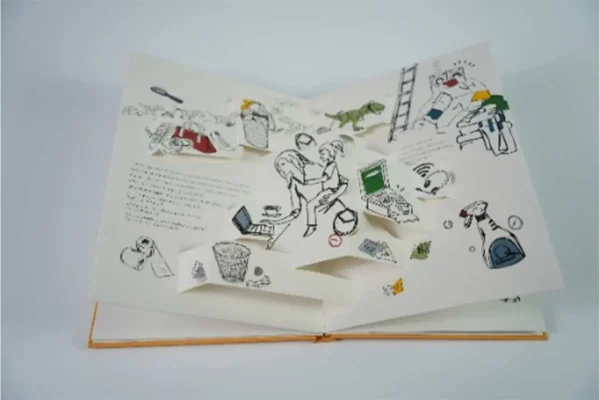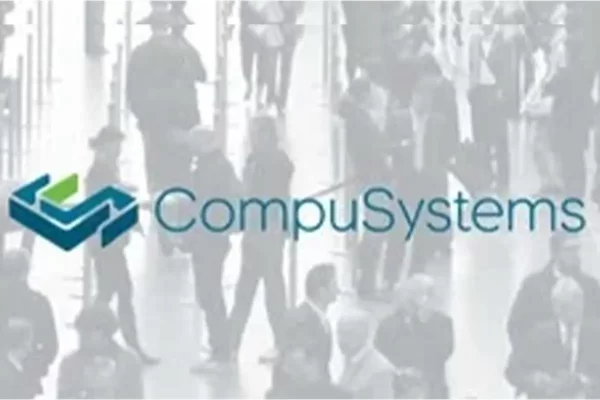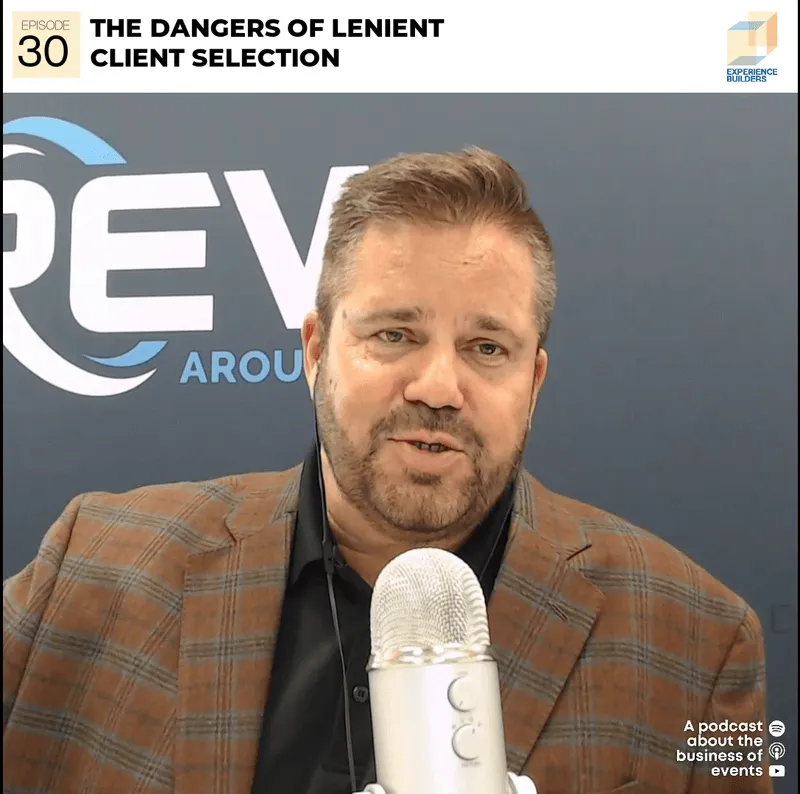By Ray Smith, Exhibit City News
Rob Hester could have skipped SEMA and saved $30,000 on travel expenses from Jonesboro, Ark., Air BnB housing and 20-foot-by-30-foot exhibit booth at Las Vegas Convention Center to show off his award-winning work as owner of Flat Out Autos.
He took first place from TMI Automotive Products for outstanding custom interior in a 1972 Cutlass convertible, on loan for SEMA from a customer in Minnesota. Even better, he sold two custom K-5 Blazers, shortening the wheelbase of a full-size Silverado, to a private collector in Kuwait for around $70,000 each.
That’s a good measure of return on investment.
“We have seen value at this show,” says Hester, who started exhibiting at SEMA in 2019. “We’re a small shop in a small town and this allows us to be right next to the top builders in the country. It makes sense to keep investing the money.”
SEMA 2024, held Nov. 5-8 at Las Vegas Convention Center, brought an estimated 160,000 attendees from 140 countries to check out the latest aftermarket products, emerging trends and technology shaping the future of automotive performance.
With more than 2,400 exhibit booths, including 580 first-time exhibitors, and 1,400 vehicles on display, the show covers 1.2 million square feet of convention center space. Engines screamed and tires smoked in the Silver Lot where aftermarket products were put to the test in hopped-up cars and trucks, demonstrating their power to the delight of apoplectic, dyed-in-the-wool gearheads.
HEALTHY AFTERMARKET
Electric vehicles are the wave of the future, but nothing shakes the depth of your soul like an internal combustion engine belching out 500-plus horsepower. It’s still alive and roaring.
Sales in the automotive specialty equipment market grew to $53.2 billion in 2023, up 1 percent from the previous year, according to a new report from SEMA.
The report finds that the light truck sector continues to drive the specialty equipment industry, with pickups (32 percent), CUVs (15 percent) and SUVs (12 percent) accounting for over half of accessory and performance parts sales.
“The economy continues to offer some uncertainty as we have emerged from the effect of COVID-19 and grapple with politics, global conflicts, and international trade policies,” states SEMA Market Research Director Gavin Knapp. “Yet, consumers keep on spending and that will always be good for our industry. Unless a big economic shock hits, we can expect to continue with a reasonable growth rate moving forward.”
While attendance at NASCAR races has waned, the need for speed persists as track-use motorsports parts exceeded $8 billion in 2023 sales, according to the first-ever market report from Performance Racing Industry. The report found that 76 percent of racing businesses view the racing market as either stable or on the rise.
MILLION-DOLLAR QUESTION
Bruce Van Sant, owner of Multitool Grinder in Pella, Iowa, has exhibited at SEMA for 20 years, minus a couple of shows. He shelled out about $20,000 for this year’s show, occupying a 10-foot-by-30-foot spot in South Hall to display belt and disc grinding attachments.
“It really is expensive coming from the Midwest to send our staff out here, the hotels and food,” he says. “Is it worth doing the shows? It’s the million-dollar question for tradeshows. If you could figure that out, you’d be rich.”
Twenty years ago, Van Sant took away leads from SEMA and logged information on his customers. Now he can’t track sales to leads, other than online leads, which is where most of his sales occur.
“When you’re on the phone talking to a customer and you ask, ‘How did you hear of us?’ It’s Instagram, Facebook, YouTube,” the business owner relates. “They don’t know. They saw us somewhere. For us, it’s more about reinforcing … see us here as real people, not just kids on the internet with a website.”
During the pandemic, when virtual conferencing and Zoom meetings replaced in-person events, Van Sant would have honestly predicted the death of tradeshows. “There’s still value to shaking somebody’s hand and seeing them face to face,” he believes.
SEMA FUTURE
Originating from a congregation of hot-rod manufacturers at Dodger Stadium in 1967, SEMA has evolved into a Disneyland-like automotive experience in Las Vegas.
Convention-goers are turned away from packed parking lots, wait in long lines at food concessions, and complain about being gouged at hotels and restaurants. A hot dog and chips at the convention center will run you $12; a veggie plate is $18.
The five-person team representing Alpha Rex, an Irwindale, Calif., company that makes special headlights and taillights for the Toyota Supra, Nissan Z, Honda Civic and Honda S2000, is staying at an Air BnB property. It’s one way to cut expenses, notes warehouse manager Bobby Lopez, a 10-year SEMA veteran.
He’s seen about a 40 percent increase in foot traffic at Alpha Rex’s exhibition in the Central Hall, compared with last year in the West Hall. “It’s been pretty busy,” Lopez says.
Hester of Flat Out Autos describes SEMA as “phenomenal,” the sole advertising avenue for his company. “It allows us this marketing aspect. You can’t put a price on it,” he tells Exhibit City News.
On the other hand, ICSC, the shopping center and retail convention, is “dead,” declares Hester, who’s also in the construction and real estate business. Those meetings can be conducted on Zoom, whereas car guys want to see what they’re getting, touch the parts, talk to the manufacturers.
SEMA executives are unequivocally optimistic about the show’s future. As attendees trend toward a younger, more dynamic demographic, the show is shifting gears to deliver “engaging, experiential elements that go beyond traditional tradeshow norms.” The automotive tradeshow closed with SEMA Fest, a concert featuring Sublime, Cage the Elephant, Fitz and the Tantrums, and Petey.






